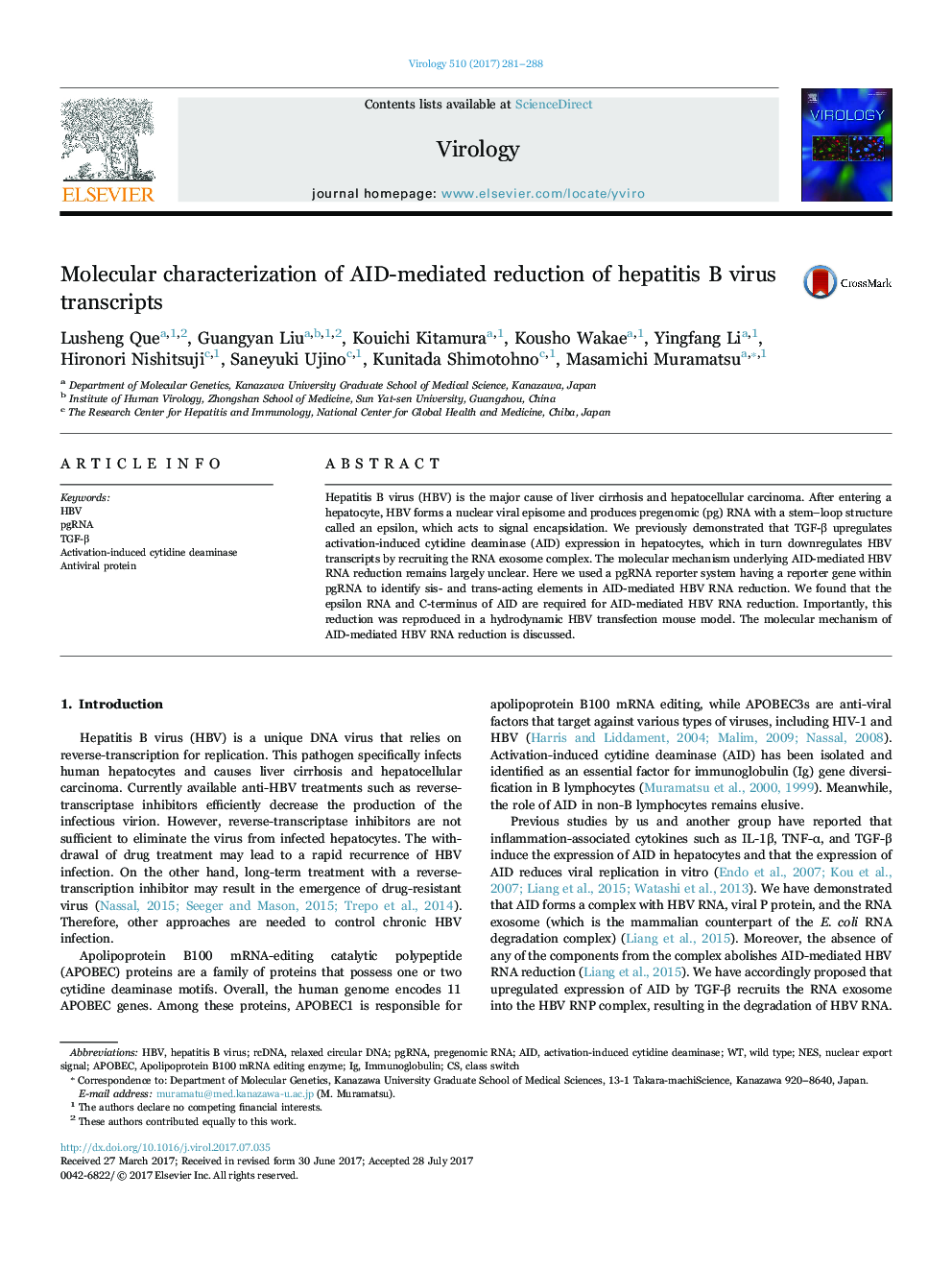| Article ID | Journal | Published Year | Pages | File Type |
|---|---|---|---|---|
| 5675235 | Virology | 2017 | 8 Pages |
Abstract
Hepatitis B virus (HBV) is the major cause of liver cirrhosis and hepatocellular carcinoma. After entering a hepatocyte, HBV forms a nuclear viral episome and produces pregenomic (pg) RNA with a stem-loop structure called an epsilon, which acts to signal encapsidation. We previously demonstrated that TGF-β upregulates activation-induced cytidine deaminase (AID) expression in hepatocytes, which in turn downregulates HBV transcripts by recruiting the RNA exosome complex. The molecular mechanism underlying AID-mediated HBV RNA reduction remains largely unclear. Here we used a pgRNA reporter system having a reporter gene within pgRNA to identify sis- and trans-acting elements in AID-mediated HBV RNA reduction. We found that the epsilon RNA and C-terminus of AID are required for AID-mediated HBV RNA reduction. Importantly, this reduction was reproduced in a hydrodynamic HBV transfection mouse model. The molecular mechanism of AID-mediated HBV RNA reduction is discussed.
Keywords
Related Topics
Life Sciences
Immunology and Microbiology
Virology
Authors
Lusheng Que, Guangyan Liu, Kouichi Kitamura, Kousho Wakae, Yingfang Li, Hironori Nishitsuji, Saneyuki Ujino, Kunitada Shimotohno, Masamichi Muramatsu,
